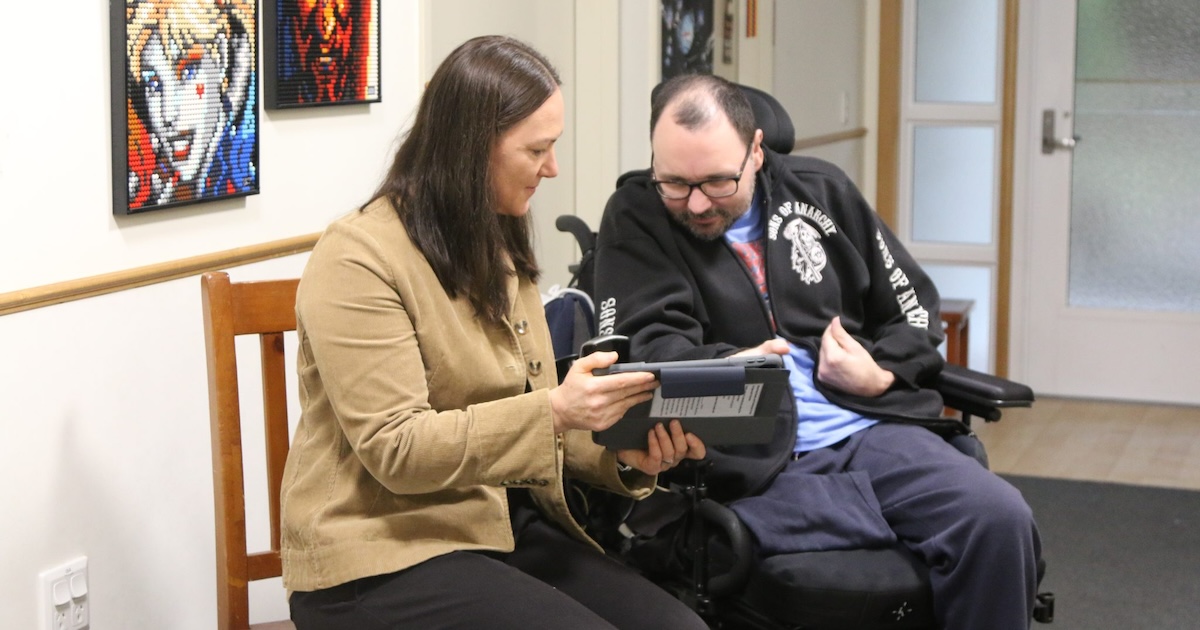Australian homes currently have an average of 17 connected devices, including smartphones, tablets, watches, TVs, wearable devices and even connected fridges.
And with Schneider Electric Smart Home Spaces Director Ben Green predicting that this number is going to rise to 37 connected devices per household by 2021, the potential of these devices is huge.
While the majority of these devices are currently used for safety – such as security systems, energy monitoring or comfort management like blinds, lighting and heating – we are slowly seeing a rise in connected health devices enter the home, either as direct clinical tools such as blood pressure cuffs, or secondary use devices that collect data and provide better insights into a patient’s activities and needs.
In addition, the proliferating number of mobile health apps in the market supports future potential. In 2017 alone, there were more than 325,000 mobile health apps available, with that number set to rise.
Patients use these mobile health apps to understand and manage their health needs, be it for their general wellness or managing specific diseases, or for operational purposes such as managing their health insurance or provider specific services.
Clinicians are also increasingly looking to use these applications to support clinical care delivery or general work process efficiencies.
As such, it’s becoming an increasingly crowded marketplace to attract and retain the attention of potential customers and investors.
The commercial players who have long been exposed to the market forces of changing consumer demands and expectations understand the value of strong design. To stand out, as well as deliver a great product or service and a smooth experience for users requires commitment and use of design.
THE CHALLENGE
Many health organisations and senior leaders within healthcare still think of design as the ‘colouring-in’ department – a nice to have if they’ve got some extra money.
Yet it’s prevalent, in an increasingly competitive commercial space, that the organisations that prioritise and include design from the outset emerge as the leaders.
In Australia, when speaking to stakeholders across the sector, sentiments that the healthcare industry struggles to translate health and medical research output into commercially viable, scalable and usable solutions still exist.
There are, of course, some brilliant exceptions. Companies such as Blamey Saunders, ResMed, Attend Anywhere, DoseMe and Seer Medical have led the way.
While we have seen the emergence of many incubators and startup hubs, only one, ANDHealth, has developed specific programs that enable digital health innovators to create commercially scalable, successful companies on a global level.
Collaborative research centres (CRCs), innovation hubs and accelerators have also been a core part of the innovation landscape in Australia, as they partner industry with academia to encourage the translation of research into commercially viable, scalable solutions. But even then, the role of design in enabling innovation is yet to be fully realised.
Many research grant recipients face challenges when trying to incorporate design into the planning and development of their activities.
In many cases, the grant stipulates that funds cannot be spent on design or commercial advice and support services. This leads to poorly designed and difficult to use products and services being developed and used in trials or other research initiatives.
This may create a number of risks not only for the insights generated by the trial, but also in the ability to translate the research into market ready solutions.
Many are also aware of the 1:10:100 rule in terms of costs escalating – that $1 spent on prevention will save $10 on correction and $100 on failure costs. This applies to the chain in healthcare. As one moves along the stream of events, from design to delivery, the cost of errors escalate and failure costs becomes greater.
BENEFITS AND WHAT'S REQUIRED TO SUCCEED?
Design can and should be a key part of fuelling the future innovation economy, from ideation and research, all the way through to implementation and growth.
There is significant evidence supporting the investment of good usability and design. Some benefits include: increased sales, a decrease in user error, task times and training times, and reduced development, maintenance and support costs.
Research pilots can achieve success in the open market, but these institutions will often need to seek investment, gain customers and provide a usable, efficient and effective solution for the end user. For this, design is essential.
The World Economic Forum, in its Future of Jobs Report, identified creativity as one of the top three skills workers will need in 2020. Creativity was ranked number 10 on the list in 2015.
As such, with the avalanche of new products, new technologies and new ways of working, the healthcare industry is going to have to become more creative in order to benefit from these changes.
To explore this area of discussion further, digital health strategy, design and innovation agency, codesain, will be hosting a panel as part of the Sydney Design Festival on March 5 at the George Institute in Sydney from 4pm to 7pm.
Rachel de Sain is the CEO and lead advisor of codesain and was previously the Executive General Manager of Innovation and Development at the Australian Digital Health Agency.
